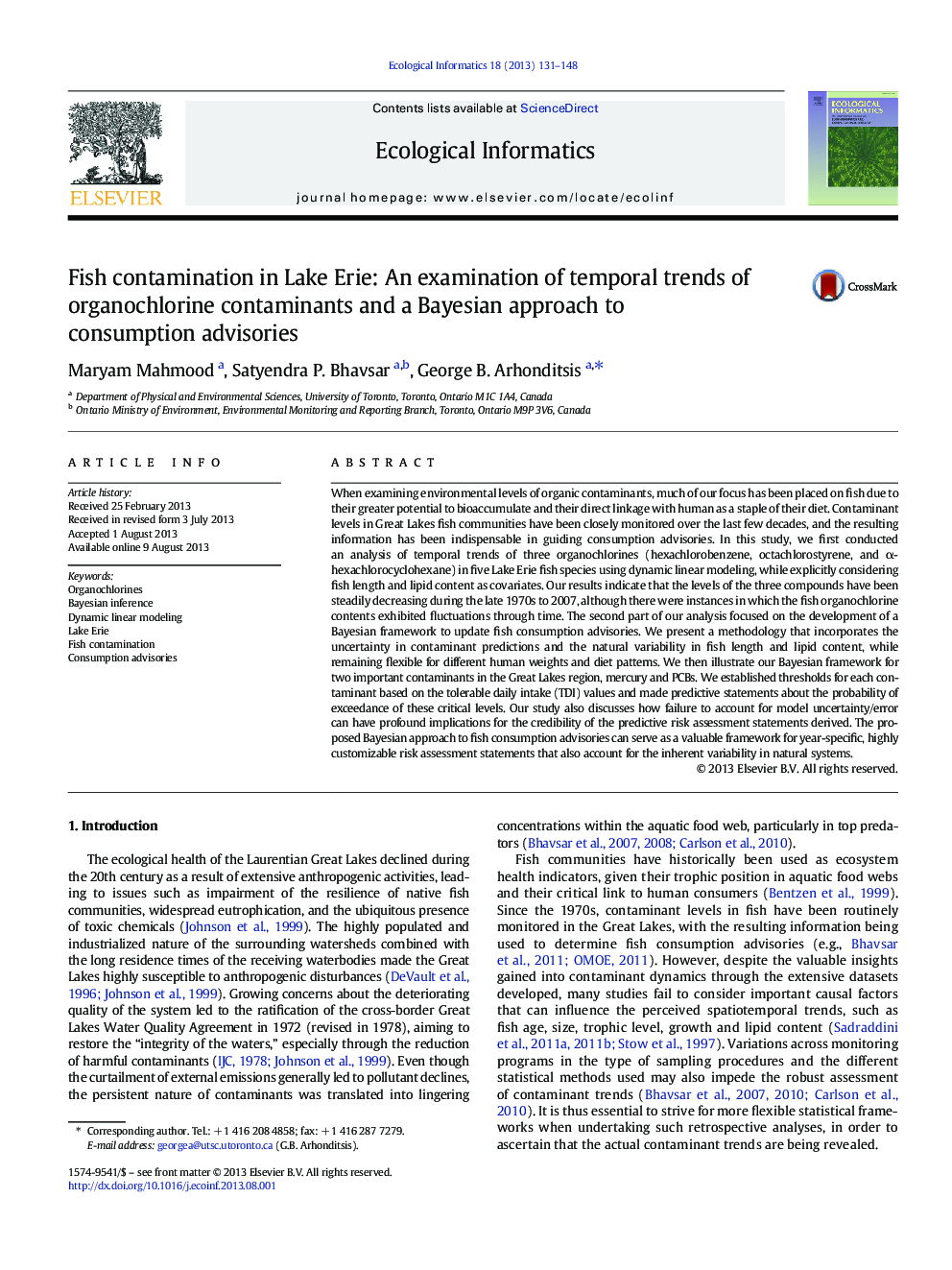| کد مقاله | کد نشریه | سال انتشار | مقاله انگلیسی | نسخه تمام متن |
|---|---|---|---|---|
| 4374936 | 1617214 | 2013 | 18 صفحه PDF | دانلود رایگان |

• We examine temporal trends of organochlorines in five fish species in Lake Erie.
• The levels of organochlorines have steadily decreased during the study period.
• We also present a Bayesian framework to update fish consumption advisories.
• We established contaminant thresholds based on tolerable daily intake values.
• Model uncertainty can affect the credibility of fish consumption advisories.
When examining environmental levels of organic contaminants, much of our focus has been placed on fish due to their greater potential to bioaccumulate and their direct linkage with human as a staple of their diet. Contaminant levels in Great Lakes fish communities have been closely monitored over the last few decades, and the resulting information has been indispensable in guiding consumption advisories. In this study, we first conducted an analysis of temporal trends of three organochlorines (hexachlorobenzene, octachlorostyrene, and α-hexachlorocyclohexane) in five Lake Erie fish species using dynamic linear modeling, while explicitly considering fish length and lipid content as covariates. Our results indicate that the levels of the three compounds have been steadily decreasing during the late 1970s to 2007, although there were instances in which the fish organochlorine contents exhibited fluctuations through time. The second part of our analysis focused on the development of a Bayesian framework to update fish consumption advisories. We present a methodology that incorporates the uncertainty in contaminant predictions and the natural variability in fish length and lipid content, while remaining flexible for different human weights and diet patterns. We then illustrate our Bayesian framework for two important contaminants in the Great Lakes region, mercury and PCBs. We established thresholds for each contaminant based on the tolerable daily intake (TDI) values and made predictive statements about the probability of exceedance of these critical levels. Our study also discusses how failure to account for model uncertainty/error can have profound implications for the credibility of the predictive risk assessment statements derived. The proposed Bayesian approach to fish consumption advisories can serve as a valuable framework for year-specific, highly customizable risk assessment statements that also account for the inherent variability in natural systems.
Journal: Ecological Informatics - Volume 18, November 2013, Pages 131–148